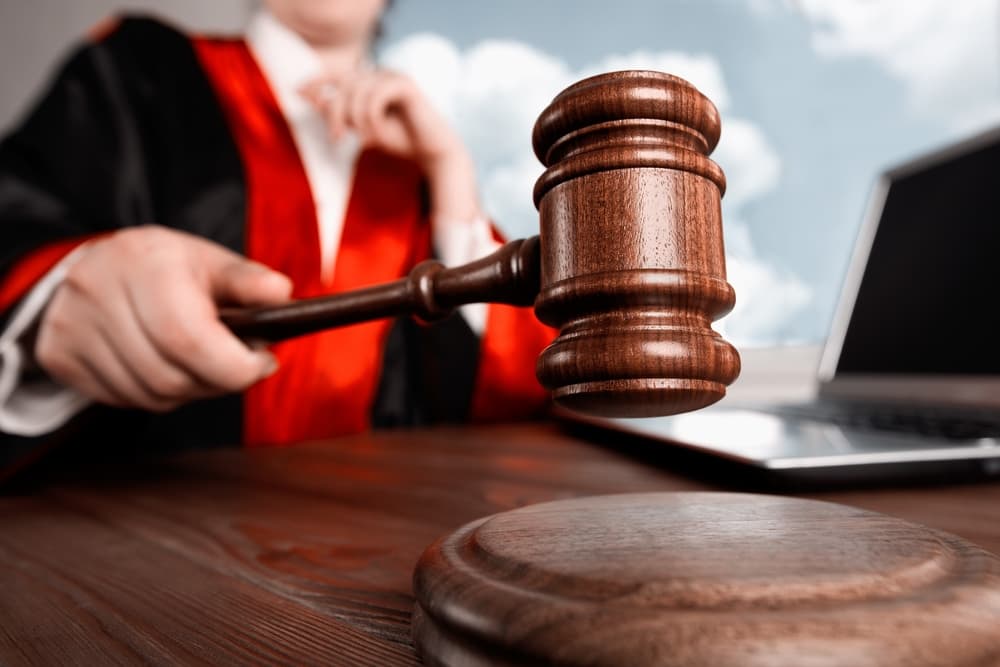A personal injury lawsuit can be filed by anyone who finds themselves or a loved one injured due to someone else’s negligence. A personal injury lawsuit is a legal process through which an individual seeks compensation for injuries sustained. This post will walk you through a personal injury lawsuit’s stages and important aspects.
Introduction to Personal Injury Lawsuits
A personal injury lawsuit starts when an individual (the plaintiff) alleges harm caused by the negligence of another party (the defendant). These injuries can result from car accidents, slips and falls, medical malpractice, and workplace accidents. The underlying principle of a personal injury lawsuit is to seek financial compensation for the injuries and losses suffered due to the defendant’s actions or inactions.
What is Negligence?
Negligence forms the basis for most personal injury cases. In legal terms, negligence refers to the failure to exercise the level of care that a reasonably prudent person would under similar circumstances. This concept is rooted in the idea that individuals in society owe a certain duty of care to each other, and failure to uphold this duty can result in harm or injury to others, for which the negligent party can be held legally responsible.
The concept of negligence involves several key elements that the plaintiff must prove to establish the defendant’s liability. First, there is the establishment of a duty of care. This duty varies depending on the relationship between the parties and the circumstances. For example, a driver on the road has a duty to drive safely to avoid harming others, a doctor has a duty to provide competent medical care to their patients, and property owners have a duty to ensure their premises are safe for visitors.
Once a duty of care is established, the next step is to demonstrate that there was a breach of this duty. Breach of duty means showing that the defendant failed to act as a reasonably prudent person would in similar circumstances. In practical terms, this can involve a driver not adhering to traffic laws, a doctor deviating from standard medical practices, or a property owner neglecting to fix a known hazard. The breach must be a deviation from what is typically expected in those specific circumstances.
After establishing a breach of duty, the plaintiff must then prove causation. Causation in negligence means that the breach of duty was the direct cause of the plaintiff’s injuries. This is often where personal injury cases become particularly complex, as proving causation requires showing a direct link between the defendant’s actions and the injury suffered. It involves demonstrating that the injury would not have occurred but for the defendant’s breach of duty.
Finally, the plaintiff must demonstrate that they suffered actual damages due to the defendant’s negligence. These damages can be physical, such as bodily injuries, emotional, like pain and suffering, or financial, such as medical expenses or lost income. The damages must be quantifiable to some extent, as they form the basis for the compensation sought in the lawsuit.
Negligence is a broad legal concept with numerous applications, but at its core, it’s about responsibility and accountability. It ensures that individuals and entities are accountable for failing to uphold the expected standard of care, leading to harm or injury to others.
The Process of Filing a Lawsuit
A personal injury lawsuit begins well before you file a case or enter a courtroom. It starts with consulting with an attorney. This initial consultation is an opportunity for the injured party, now a potential plaintiff, to lay out the details of their case and for the attorney to evaluate its merits. During this consultation, the attorney will assess the specifics of the case, including how the injury occurred, the extent of the damages, and who can be legally responsible.
The attorney’s evaluation involves:
- A thorough analysis of the facts.
- Looking into the nuances of the incident.
- Understanding the context in which the injury occurred.
They will review any evidence the plaintiff has, such as medical records, eyewitness accounts, or photographs of the injury or accident scene. The attorney will also consider the applicable laws and precedents that can influence the outcome of the case.
An important part of this evaluation is assessing the plaintiff’s damages. This is not just limited to physical injuries but extends to emotional trauma, financial losses due to medical bills and lost income, and the overall impact on the plaintiff’s quality of life.
Once the attorney has assessed the case and the plaintiff decides to proceed, the next step is filing a complaint. This legal document, filed in the appropriate court, formally initiates the lawsuit. The complaint sets forth the plaintiff’s allegations against the defendant. It details the facts of the case, the legal basis for holding the defendant liable, and the damages the plaintiff seeks. The complaint must include all relevant legal claims and accurately convey the extent of the harm suffered.
Following the filing of the complaint, the next procedural step is to serve the defendant with the lawsuit. Serving the defendant is a legal requirement that ensures the defendant is properly notified about the lawsuit and has an opportunity to respond. This involves delivering a copy of the complaint and a summons to the defendant, typically carried out by a professional process server or law enforcement officer. The summons informs the defendant of the need to respond to the complaint within a specified period, typically 20 to 30 days, depending on the jurisdiction.
Service of the complaint prevents a defendant from being taken by surprise in a lawsuit and provides them with the necessary time and information to prepare a response or defense. Once the defendant is served, they are officially part of the legal process and must participate in the lawsuit. Their response to the complaint can take several forms, from an outright denial of the allegations to potentially filing counterclaims against the plaintiff.
The Discovery Phase
The discovery phase is a period in a personal injury lawsuit, serving as the primary method by which both parties – the plaintiff and the defendant – gather pertinent information and evidence relevant to the case. This phase allows each side to fully understand the facts of the case, ensuring that no one is blindsided and that both parties can adequately prepare for negotiation or trial.
During discovery, each side collects information from the other. This includes any data that might be relevant to the dispute, whether it directly supports or refutes the claims or defenses of either party. The type of information sought can include medical records, accident reports, employment records, financial documents, and any other evidence that can shed light on the incident or the extent of the injuries and damages claimed.
One of the primary tools of discovery is the exchange of documents. Both sides must share copies of any documents relevant to the case. This can mean medical bills and records for the plaintiff that illustrate the nature and extent of the injuries and treatment costs. For the defendant, it might include maintenance records or safety protocols in a premises liability case or an employee’s driving record in a case involving a commercial vehicle accident.
Another key element of discovery is the use of interrogatories. One party sends these questions to the other, requiring a written response. Interrogatories get direct answers to specific questions about the case. This might include questions about the details of the incident, the nature of the injuries, or the basis for claiming certain damages. The responses to interrogatories are given under oath, making them a vital part of building the factual foundation of the case.
Depositions are also a part of discovery. A deposition is an out-of-court testimony given by parties or witnesses, recorded by a court reporter, and often videotaped. During a deposition, attorneys from both sides can ask questions directly. Depositions are useful for gathering detailed information and assessing how a witness or party might present in a trial setting. How a witness answers questions, their demeanor, and their overall credibility can significantly impact the case’s trajectory.
Requests for admission are another discovery tool where one party asks the other to admit or deny certain facts or the authenticity of documents. This process helps streamline the trial by establishing certain agreed-upon facts, reducing the number of issues you must prove in court.
Discovery is not just about collecting evidence; it’s also about strategy. The information gathered during this phase helps each side evaluate the strengths and weaknesses of their case. It can influence decisions about settling the case or proceeding to trial. Discovery can often lead to uncovering new information that can significantly alter the lawsuit’s course.
Negotiations and Mediation
Negotiations and mediation play a role in resolving many personal injury cases, often providing a path to settlement without needing a lengthy and costly trial.
In personal injury law, negotiations typically commence once enough information has been gathered during the discovery phase. This stage involves direct discussions between the attorneys representing the plaintiff and the defendant. The primary objective is to reach a mutually agreeable settlement, a resolution where both parties find the terms acceptable.
The plaintiff’s attorney usually begins by sending a demand letter to the defendant’s attorney or insurance company, outlining the claim’s basis and the amount of money they seek. This figure is typically calculated based on the damages suffered by the plaintiff, including medical expenses, lost income, pain and suffering, and any other losses incurred due to the injury.
The defendant will respond to this demand through their attorney or insurer. More often than not, their initial offer is lower than requested. This is where the negotiation truly begins, with each side presenting their arguments, supporting evidence, and counteroffers.
Skilled attorneys use this phase to advocate on behalf of their clients, aiming to reach a settlement that adequately compensates the plaintiff while considering the strengths and weaknesses of their case.
Negotiations can be a drawn-out process involving several rounds of back-and-forth discussions. The goal is to find common ground where both parties feel their concerns and needs have been adequately addressed. These discussions can happen through direct communication, meetings, or written correspondence, and they require a thorough understanding of the legal and factual elements of the case and negotiation skills.
However, there are instances where negotiations reach an impasse. In such scenarios, mediation can be an effective alternative. Mediation involves bringing in a neutral third party – the mediator – to help facilitate discussions and guide both parties toward a resolution. Unlike a judge or arbitrator, a mediator does not decide the case but works to help the parties find a mutually agreeable solution.
Each party can present their case during mediation, including key facts and legal points. The mediator then works with both sides, often in separate sessions, to explore the possibilities for settlement, helping them understand the risks and benefits of continuing to trial versus settling. The mediator’s role is to break down the communication barriers, address misunderstandings, and help each party see the other’s perspective.
Mediation offers several advantages. It tends to be less formal and more flexible than a court trial and can often happen much sooner than a court date, speeding up the case’s resolution. Also, mediation allows for creative solutions that might not be available in a court setting. This process is also confidential, which can be beneficial for both parties.
A successful mediation or negotiation results in a settlement agreement. This agreement is legally binding and typically involves the defendant or their insurer paying the plaintiff an agreed-upon sum of money. In exchange, the plaintiff agrees to drop the lawsuit and not pursue further legal action regarding the injury.
The Trial
If a settlement is not possible, the case proceeds to trial. During the trial, both parties present their evidence and arguments to either a judge or a jury. The trial process includes opening statements, witness testimonies, cross-examinations, and closing arguments.
The Plaintiff’s Burden of Proof
In a personal injury trial, the burden of proof lies with the plaintiff. This means the plaintiff must prove, by a preponderance of the evidence, that the defendant’s negligence caused their injuries.
The Verdict
After both sides have presented their cases, the judge or jury deliberates and makes a decision. If the plaintiff succeeds, the verdict will include the compensation the defendant must pay.
Compensation in Personal Injury Lawsuits
Compensation, or damages, in personal injury cases, can be classified into two main categories: economic and non-economic damages.
- Economic Damages: These are quantifiable financial losses resulting from the injury, such as medical expenses, lost income, and property damage.
- Non-Economic Damages: These damages are more subjective and include pain and suffering, emotional distress, loss of enjoyment of life, and loss of consortium.
The Appeals Process
Either party can appeal the court’s decision if they believe a legal error affected the trial’s outcome. The appeals process involves a higher court reviewing the trial’s proceedings.
Contact a Personal Injury Lawyer

Understanding each step in the personal injury process can demystify the journey and prepare you for what lies ahead. While financial compensation can never fully compensate for the pain and disruption caused by an injury, a successful personal injury lawsuit can provide much-needed relief and a sense of justice.
Remember, each personal injury case is unique, and the legal process can vary based on the specific circumstances. Seeking the guidance of a knowledgeable Chicago personal injury attorney can provide you with the support you need to resolve your claim successfully.


